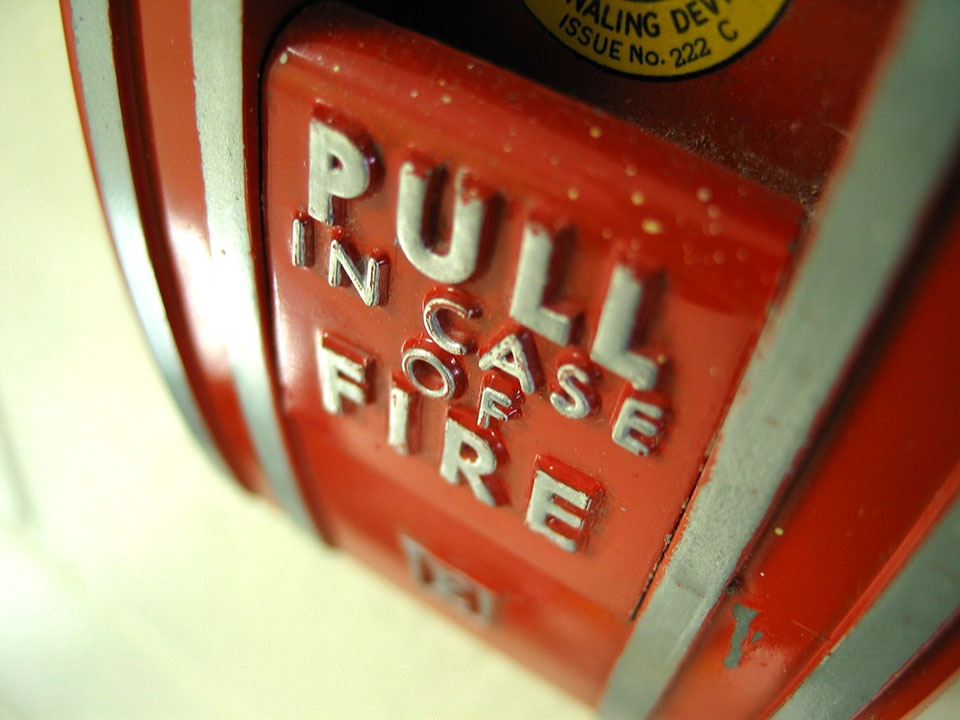Between 2007 and 2011, office fires caused approximately $112 million annually in property damage. To help keep your workplace safe, here is some important information you should know about the causes of office fires, as well as fire hazards you should be on the lookout for.
The Causes
Office Machines, Appliances & Wiring
Make sure they’re all in good working condition. Assign one associate to make sure all space heaters, coffee makers and cooking appliances are shut off at the end of each workday. Make sure electrical outlets aren’t overloaded and immediately replace any broken or cracked electrical cords. If additional outlets are needed, use a UL-approved power strip with a circuit breaker. Never plug one power strip into another, and never use extension cords in place of permanent wiring.
Smoking Materials
Always use large, non-tip ashtrays in areas where smoking is allowed. Make sure all smoking materials are completely extinguished before emptying the ashtray.
Arson
Pay close attention to company and building security measures. Keep doors and windows locked after business hours, and keep the areas around your business well lit (especially alleys and loading docks). Pay close attention to housekeeping inside and outside your building – make sure combustible trash and debris is picked up on a daily basis.
Additional Fire Hazards
- Accumulated trash
- Blocked fire exits and aisles
- Burned-out exit lights
- Blocked stairways
- Open or blocked fire doors
- Missing or broken fire safety equipment
- Unsafe appliances or cooking equipment
- Overloaded outlets
Fire Prevention Essentials
Know the location of the following fire and life safety components – and know how to use them, too.
- Manual pull stations (usually located near fire exits)
- Smoke detectors (should be inspected/tested by your alarm company)
- Fire exits and stairways
- Sprinkler systems (should be inspected/tested by your sprinkler company)
- Fire doors
- Fire alarm monitoring services
- Fire extinguishers
Your local fire codes will require a specific number of fire extinguishers within your facility – as well as a specific size, type and location. See your local fire department if you have any questions and remember: never try to fight a fire that's too big with a fire extinguisher – sound the alarm instead and evacuate the building.
Building Evacuation Plan
Every company should establish a fire/emergency evacuation plan. Each associate should have an assigned primary fire exit that's close to their workstation – that would be their first choice to exit the building in case a fire alarm is activated or they see smoke or flames.
Every associate should also have an assigned secondary fire exit in case their primary exit is blocked by flames, smoke or some other obstruction.
Associates should also be assigned an outdoor meeting location – somewhere they would meet with their supervisor or manager for a head count after the building has been evacuated. Larger buildings with many employees should have multiple meeting locations grouped by department.
Supervisors and managers should always maintain an up-to-date attendance list and immediately report any missing employees directly to the police or fire departments.
Associates should practice their fire/emergency evacuation plan at least once each year. Don't forget to train new associates on your company's fire/emergency evacuation plan when they're hired.
In Case of a Fire
- If the fire alarm sounds, everyone should evacuate the building immediately using their primary or secondary fire exits. Don't wait (even if the initial alarm source is unknown); get out quickly and have everyone report to their assigned outside meeting location.
- Never silence the fire alarm system until given permission by the fire department. Never reset the fire alarm until the fire department arrives and investigates the source of the alarm.
- Remember your fire department's emergency number.
- Close doors as you evacuate to prevent the spread of fire and smoke.
- Never use the elevators during a fire alarm situation – use only the stairways.
- If you see smoke or flames, find another way out. Never go through smoke or flames.
Craig Sparks
Quill.com Fire Loss Prevention Specialist and retired firefighter
Craig currently coordinates the emergency response team at the Quill.com Lincolnshire corporate headquarters and also conducts training and emergency awareness seminars for all Quill.com associates. He is a State of Illinois Certified Firefighter III and also a state-certified fire inspector.


